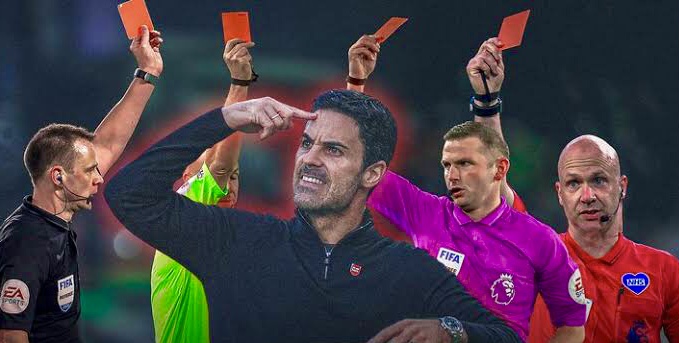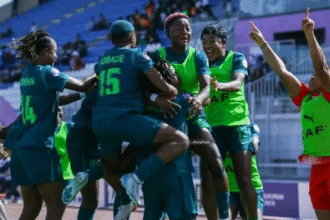The Role of Cards in Football Discipline
Over the years, there have been rules and regulations guiding the game of football that puts the managers, assistant managers, coaches, officials and most especially the players under regular check. One of these rules is the usage of cards during the course of the game. Penalty cards are most commonly used by referees to indicate that a player has committed an offence. In football, yellow cards are used as a warning for minor offenses, while red cards signify a sending-off for more serious misconduct, resulting in a player’s immediate removal from the game.
Evolving Team Responses to Red Cards
This article focuses on how football has evolved tactically and psychologically with teams today handling a red card whether through structured defensive setups, improved fitness levels or tactical flexibility. Statistically, red cards used to be a near-death sentence for teams, but modern data shows that isn’t always the case — especially for well-drilled sides. Meanwhile, tactically and mentally, teams have learned to stay compact, manage space better, and even exploit the opponent’s overconfidence.
The Premier League as a Tactical Case Study
The English Premier League is perfect for this analysis because of its intensity and tactical diversity. Tactically, managers like Guardiola, Klopp, and even Conte have shown that a red card doesn’t always kill a game. Some teams use it to sharpen their focus and frustrate the opponent. Using Arsenal as a case study, from 2019 to this day, Arsenal have received the most red cards (18) in the league. Other teams on the chart are; Wolverhampton Wanderers (15), Everton (14), Tottenham Hotspur (13), Brighton and Hove Albion (12). Despite being the most red-carded team in the span of 5 years, they’ve managed significant number of wins, indicating the manager’s tactical flexibility and the team’s resilience.
Chelsea vs Liverpool: A Modern Tactical Showcase
The match between Liverpool and Chelsea on the 28th of August, 2021 is also a compelling case study on how teams can adapt effectively after a red card. Chelsea’s resilience after Reece James’ dismissal exemplifies tactical adaptability and mental fortitude. This match underscores that, in modern football, a red card does not necessarily dictate the outcome. Through tactical adjustments, disciplined defending, and mental resilience, teams can effectively navigate the challenges of playing with ten men, securing valuable results even under adverse conditions.
Arsenal at the Etihad: Statistical Evidence of Progress
Also, Arsenal’s trip to Etihad Stadium early this season underscores how modern teams can effectively navigate the challenges posed by a red card. Research shows that there has been a 4% increase in chances at winning after receiving a red card from 2020–2025 (16%) as compared to 2010–2015 (12%). Draw probability increased from 24% to 28% in recent years. Loss probability after a red card decreased from 64% to 56%.
Red Card Preparedness: Then vs Now
Overall, teams are now more resilient after receiving a red card compared to the 2010s. Modern teams have developed more sophisticated approaches to playing with 10 men. Coaches now regularly practice “red card scenarios” during training sessions, preparing specific formations and tactical adjustments. This wasn’t as common in the 2010s, where red card situations were often handled more reactively. The physical demands of soccer have increased dramatically, with players covering more distance at higher intensities than ever before. Modern training methods, recovery protocols, and sports science have created athletes who can sustain higher workloads. When down to 10 players, this enhanced stamina becomes crucial as each remaining player must cover more ground. The analytics revolution has given teams better insights into optimal strategies when playing shorthanded.
Data-Driven Coaching and Mental Fortitude
Coaches now have access to data showing which formations and approaches yield the best results with 10 men. This evidence-based approach allows for more effective in-game adjustments compared to the more intuitive approaches of the past. There’s also been a marked improvement in the mental aspect of handling adversity. Modern teams often display a “siege mentality” after receiving a red card, using the perceived injustice as motivation. Sports psychology has become mainstream, helping players maintain focus and confidence despite the numerical disadvantage.
Tactical Low Blocks and Smarter Game Management
Teams have become more adept at executing defensive low blocks — compact defensive structures that minimize space between the lines. This approach is particularly effective with 10 men, allowing teams to remain organized while conserving energy for strategic counter-attacks. Modern players exhibit better game management skills — knowing when to slow the tempo, when to commit tactical fouls, and how to maximize set-piece opportunities. This game intelligence allows 10-man teams to control aspects of the match despite their disadvantage.
Red Card Impact: A Shrinking Competitive Disadvantage
The data shows these adaptations have made a meaningful difference, with the “penalty” for receiving a red card decreasing from an average of approximately 52% (the difference between normal win rates and post-red card win rates in 2010–2015) to about 40% in recent years — a significant competitive advantage in a sport where margins are often razor-thin.
















What an outstanding analysis. I did not expect to gain such meaningful insights.